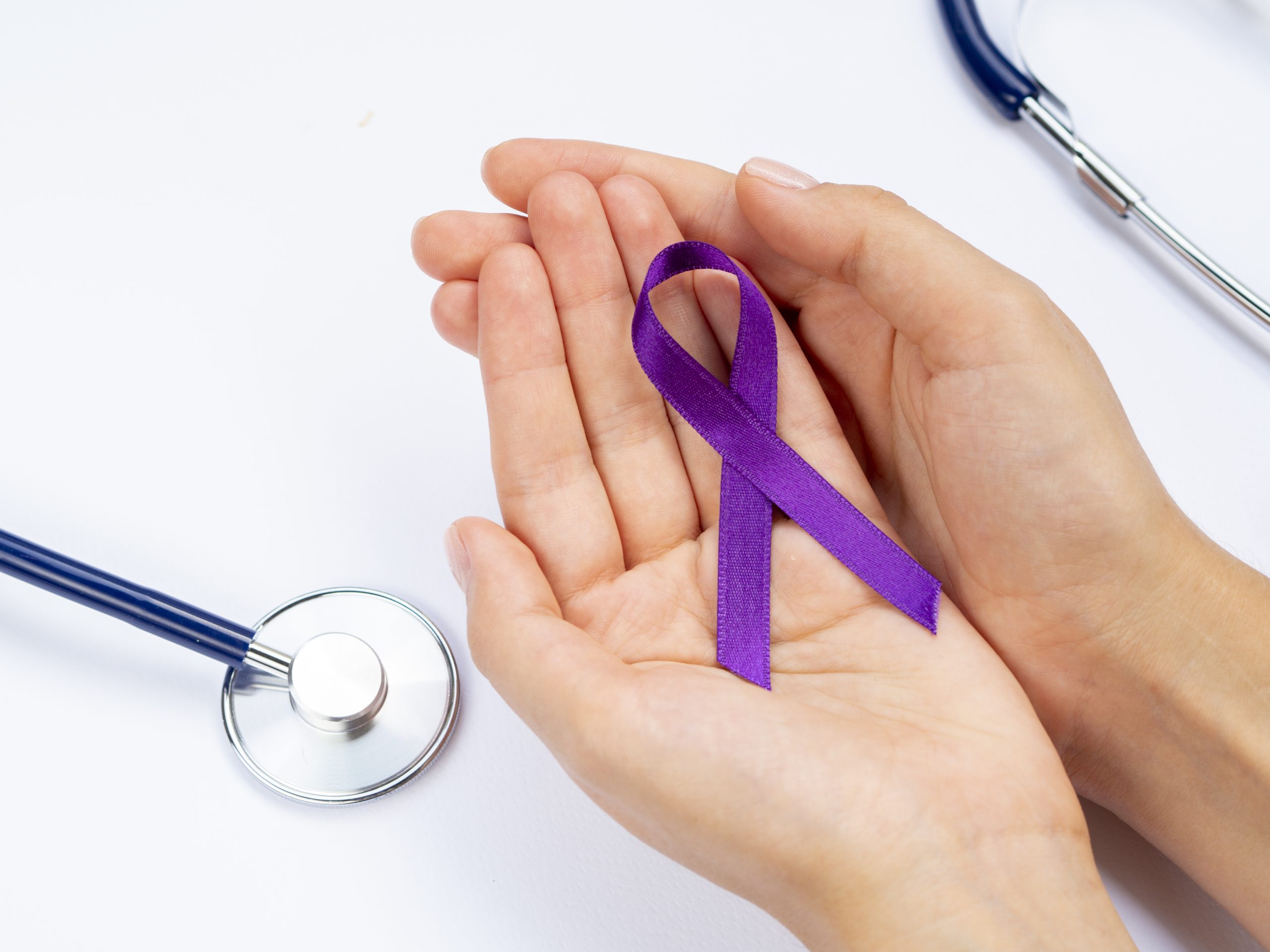 February 9, 2024
February 9, 2024
Spreading awareness about cancer prevention is crucial for empowering individuals to take proactive steps in reducing the risk of developing cancer. Educating communities about lifestyle factors, screening guidelines, vaccination recommendations, and environmental hazards associated with cancer can empower individuals to make informed choices that promote health and well-being.
Q) What is cancer?
Ans) Cancer is a complex and multifaceted disease characterized by the abnormal growth and proliferation of cells within the body. These cells, known as cancer cells, have lost the ability to regulate their growth and division, leading to the formation of tumours and the potential spread of cancerous cells to other parts of the body, a process called metastasis.
At its core, cancer arises from genetic mutations that disrupt the normal functioning of cellular processes involved in growth, division, and apoptosis (programmed cell death). These mutations can be caused by a variety of factors, including environmental exposures (such as tobacco smoke, ultraviolet radiation, and certain chemicals), genetic predisposition (inherited mutations), and lifestyle factors (such as diet, physical activity, and alcohol consumption).
One of the hallmarks of cancer is uncontrolled cell growth, which can lead to the formation of tumours. Tumors can be either benign or malignant. Benign tumours are non-cancerous and typically do not invade surrounding tissues or spread to other parts of the body. In contrast, malignant tumours are cancerous and have the ability to invade nearby tissues and metastasize to distant sites, making them much more dangerous and difficult to treat.
Diagnosing cancer typically involves a combination of imaging studies (such as X-rays, CT scans, and MRIs), laboratory tests (including blood tests and tumour marker assays), and tissue biopsy. Once diagnosed, treatment options for cancer may include surgery, chemotherapy, radiation therapy, immunotherapy, targeted therapy, or a combination of these approaches, depending on the type and stage of cancer, as well as individual patient factors.
Preventing cancer involves a multifaceted approach that includes lifestyle modifications (such as maintaining a healthy diet, exercising regularly, avoiding tobacco and excessive alcohol consumption, and practising sun safety), screening for early detection of cancer (such as mammography, colonoscopy, and Pap smears), vaccination against cancer-causing viruses (such as HPV and hepatitis B), and minimizing exposure to known carcinogens in the environment.
While cancer remains a significant public health challenge, advances in research and treatment have led to improved outcomes for many patients, underscoring the importance of continued efforts to better understand, prevent, and treat this devastating disease.
Q) How does cancer develop?
Ans) Cancer Initiation: Genetic Mutations and Cellular Damage
The development of cancer is a multifaceted process that typically begins with a series of genetic mutations or alterations in normal cells. These mutations can occur spontaneously or as a result of exposure to various carcinogens, including environmental factors such as tobacco smoke, ultraviolet radiation, and certain chemicals, as well as internal factors such as inflammation and hormonal imbalances. The initial mutation in a cell's DNA can disrupt the normal regulation of cellular processes, such as cell growth, division, and repair, setting the stage for the subsequent steps in cancer development.
Promotion: Proliferation and Clonal Expansion
Following the initiation of cancer, the mutated cells undergo a phase known as promotion, during which they begin to increase and expand clonally. This process involves the activation of signalling pathways that promote cell growth and division, as well as the suppression of pathways that normally inhibit cell proliferation. As a result, the mutated cells acquire a growth advantage over their normal counterparts, leading to the formation of a preneoplastic lesion or early tumour. The promotion phase may be influenced by various factors, including inflammation, hormonal changes, and alterations in the tumour microenvironment.
Progression: Acquisition of Additional Mutations and Tumor Formation
During the progression phase of cancer development, the preneoplastic lesion evolves into a malignant tumour through the accumulation of additional genetic mutations and epigenetic changes. These alterations further drive the abnormal growth and behaviour of the cancer cells, allowing them to invade surrounding tissues, evade the immune system, and metastasize to distant sites in the body. The progression phase is characterized by genomic instability, which increases the likelihood of acquiring new mutations and promotes the heterogeneity of the tumour cell population. As a result, cancer cells may resist therapy and exhibit phenotypic plasticity, allowing them to adapt to changing environmental conditions and treatment pressures.
Metastasis: Spread of Cancer Cells to Distant Sites
Metastasis is a hallmark of advanced cancer and represents the most lethal stage of the disease. It occurs when cancer cells break away from the primary tumour, invade nearby blood or lymphatic vessels, and travel to distant sites in the body, where they establish secondary tumours or metastases. The process of metastasis involves a series of complex steps, including local invasion of surrounding tissues, intravasation into blood or lymphatic vessels, survival in the circulation, extravasation at distant sites, and colonisation of secondary organs. Metastatic spread is facilitated by various factors, including the expression of cell adhesion molecules, proteolytic enzymes, and angiogenic factors, as well as interactions with the host immune system and the tumour microenvironment.
Microenvironmental Influences: Tumor-Host Interactions
The tumour microenvironment plays a critical role in cancer development and progression by providing a supportive niche for tumour growth, angiogenesis, and immune evasion. It consists of various cellular and non-cellular components, including cancer-associated fibroblasts, immune cells, blood vessels, extracellular matrix proteins, and signalling molecules. Interactions between tumour cells and the surrounding microenvironment can influence cancer cell behaviour, drug sensitivity, and therapeutic resistance.
Understanding the molecular and cellular mechanisms underlying cancer initiation, promotion, progression, and metastasis is essential for the development of effective strategies for cancer prevention, diagnosis, and treatment.
Q) How can you prevent yourself from getting cancer?
Ans) Though not always preventable there are certain lifestyle changes tests, and vaccinations one can take to reduce the risk of developing cancer or catching it at an early stage.
Healthy Lifestyle Choices:
Maintaining a healthy lifestyle is one of the most effective ways to reduce the risk of developing cancer. This includes adopting behaviours such as eating a balanced diet, engaging in regular physical activity, maintaining a healthy weight, and avoiding harmful substances such as tobacco and excessive alcohol. A diet rich in fruits, vegetables, whole grains, and lean proteins can provide essential nutrients and antioxidants that help protect against cancer. Regular exercise not only helps maintain a healthy weight but also reduces inflammation and improves immune function, both of which can lower cancer risk. Additionally, avoiding tobacco in all forms, including cigarettes, cigars, and smokeless tobacco, can significantly reduce the risk of developing various types of cancer, including lung, mouth, throat, and bladder cancer. Similarly, limiting alcohol consumption and avoiding excessive sun exposure can help lower the risk of certain cancers, such as breast, liver, and skin cancer.
Screening and Early Detection:
Regular screening for cancer can help detect the disease at an early stage when it is most treatable. Screening tests are available for many types of cancer, including breast, cervical, colorectal, lung, and prostate cancer, among others. These tests can help identify cancer or precancerous changes before symptoms develop, allowing for timely intervention and improved outcomes. The recommended screening guidelines vary depending on factors such as age, sex, family history, and individual risk factors. It is essential to discuss screening options with a healthcare provider to determine the most appropriate schedule and tests based on personal risk factors and preferences.
Vaccination:
Vaccination against certain viruses can help prevent infections known to increase the risk of developing cancer. For example, the human papillomavirus (HPV) vaccine can protect against several strains of HPV that are associated with cervical, anal, and oropharyngeal cancers. The hepatitis B vaccine can reduce the risk of liver cancer by preventing infection with the hepatitis B virus, which is a major risk factor for liver cancer. By vaccinating against these viruses, individuals can significantly reduce their risk of developing associated cancers and contribute to overall cancer prevention efforts.
Environmental and Occupational Protection:
Reducing exposure to environmental and occupational carcinogens is another important aspect of cancer prevention. This includes avoiding or minimizing exposure to known carcinogens in the environment, such as asbestos, benzene, radon, and certain industrial chemicals. In addition, following safety guidelines and using protective equipment in the workplace can help reduce the risk of occupational exposure to carcinogens. Employers and regulatory agencies play a crucial role in implementing and enforcing measures to protect workers from hazardous exposures, thereby reducing the incidence of work-related cancers.
Sun Safety:
Practising sun safety is essential for preventing skin cancer, the most common type of cancer in many countries. This includes wearing sunscreen with a high sun protection factor (SPF), seeking shade during peak sun hours, wearing protective clothing such as hats and sunglasses, and avoiding indoor tanning beds. Sunscreen should be applied generously and reapplied regularly, especially after swimming or sweating, to provide adequate protection against harmful UV radiation. By taking these precautions, individuals can minimise their risk of developing skin cancer and other sun-related skin damage.
Genetic Counseling and Testing:
For individuals with a family history of cancer or known genetic mutations associated with cancer risk, genetic counselling and testing can provide valuable information about their risk profile and options for risk reduction. Genetic counsellors can help individuals understand their family history, assess their personal cancer risk, and make informed decisions about genetic testing and preventive measures such as increased surveillance, risk-reducing medications, or prophylactic surgery. Genetic testing may be recommended for individuals with a strong family history of certain cancers or specific genetic syndromes associated with increased cancer risk, such as BRCA1/2 mutations in hereditary breast and ovarian cancer syndrome.
By implementing these strategies, individuals can reduce their risk of developing cancer and contribute to overall cancer prevention efforts on both individual and population levels.
Getting the appropriate medical treatment and care is crucial to avoid any associated medical complications.
To book an appointment, contact us at +91-9540 114 114.



2025 © SSB Heart and Multispecialty Hospital.